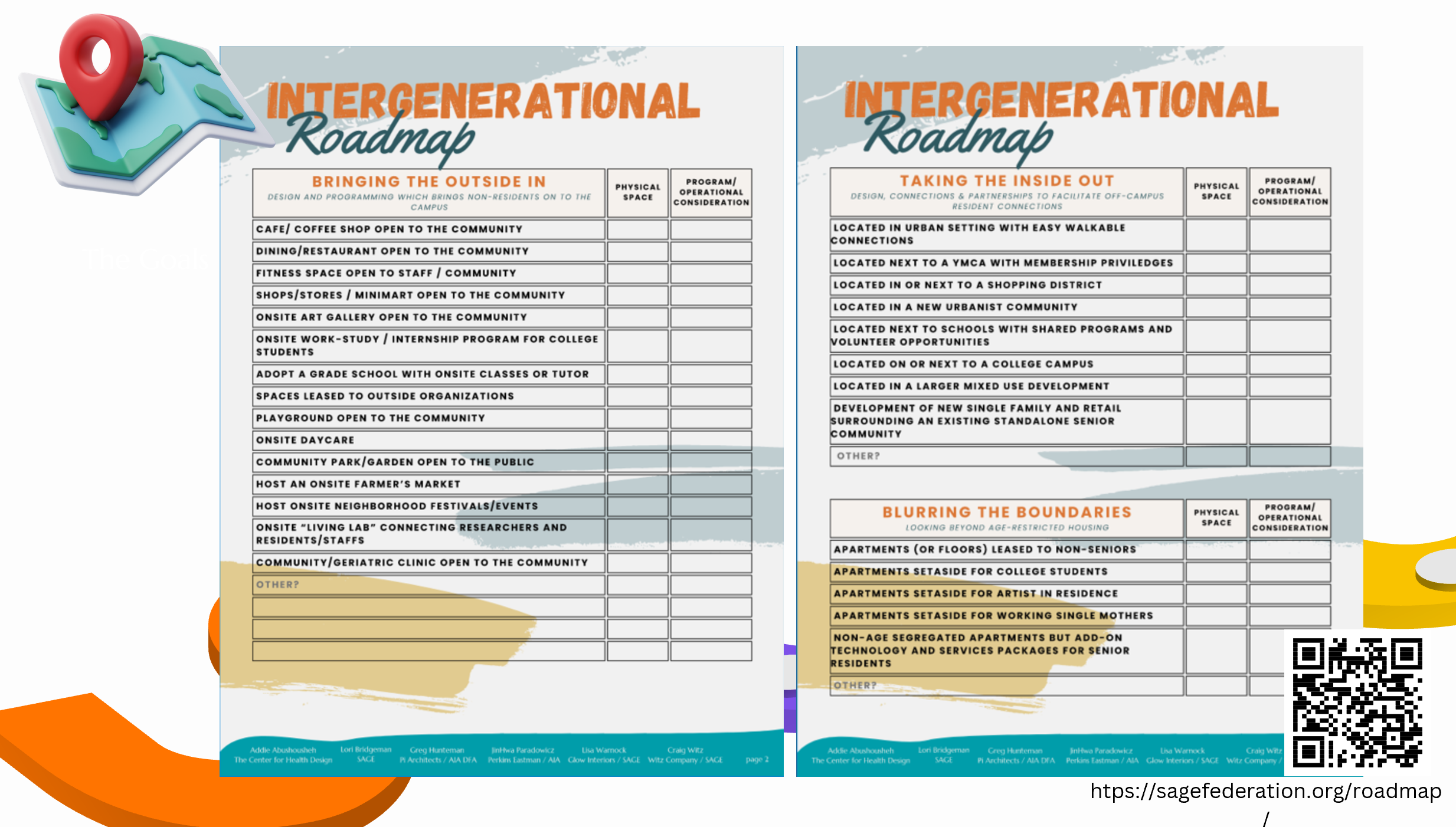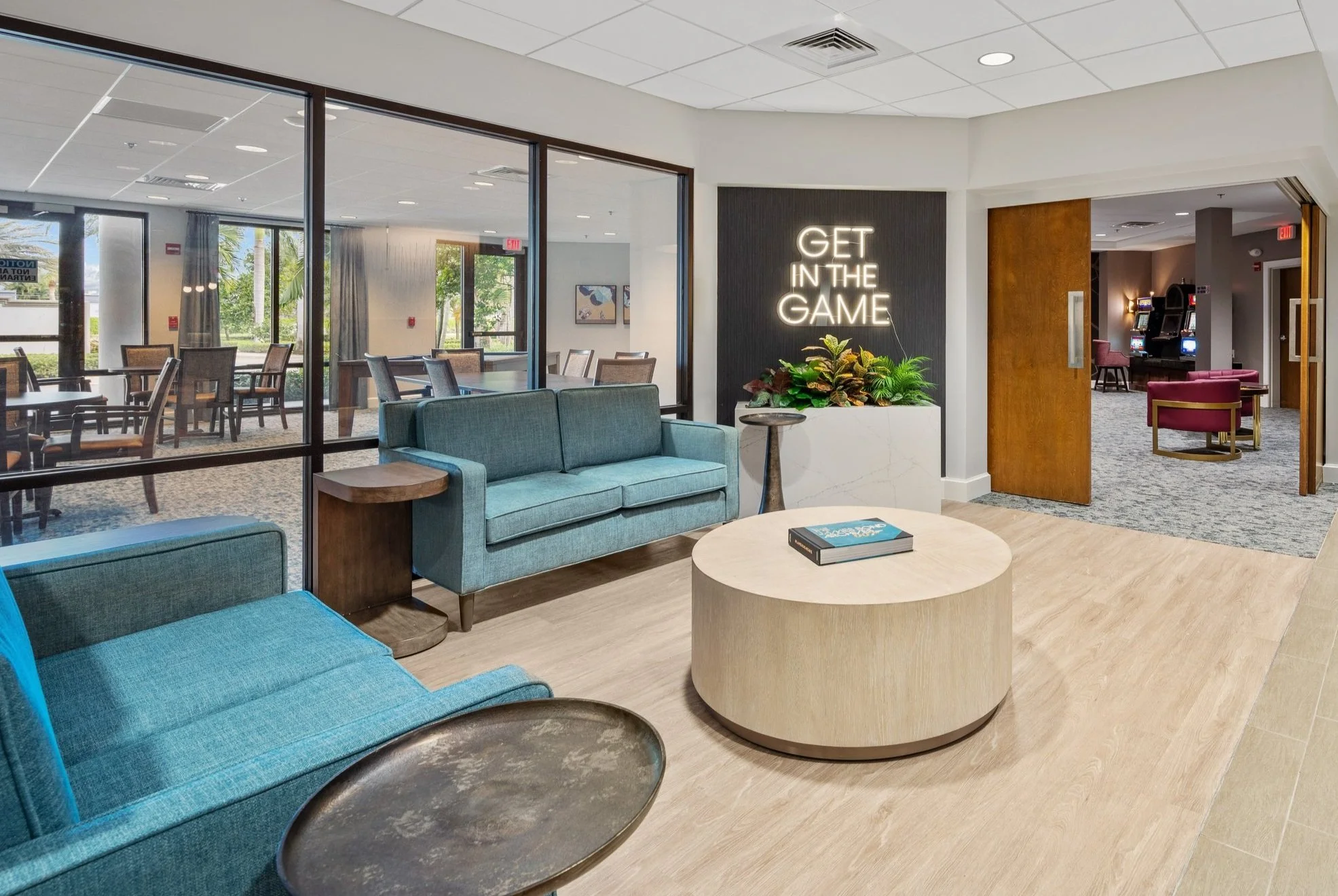Making Dollars and Sense of Intergenerational Living
Senior living industry leaders agree that designing communities that enable and promote intergenerational connections is a priority for Baby Boomers and Gen Xers. Seniors are embracing new approaches that create engagement and integrated community living, breaking down ageism while supporting socialization, health, and wellness.
Pi’s Greg Hunteman, AIA, and other members of the Intergenerational Task Force talked about Making Dollars and Sense of Intergenerational Living: Building the Business Case for Age-Inclusive Environments in a webinar.
Hunteman observed, “An active lifestyle and healthy eating, as well as technology and connectivity, are essential. These elements are the backbone for future growth and keys to meaningful living for seniors and others. We must continue to create flexible spaces within our communities that promote intergenerational living.”
Survey Says…
“Incorporating intergenerational design and programming can provide a competitive edge,” said Lori Bridgeman, director of operations at SAGE, adding, “As a part of what we’re bringing today, we want to share the results of a survey that we hosted and outcomes that we saw associated with an interdisciplinary group’s [industry professionals –designers, developers, and others--and consumers alike] responses to questions that were asked about intergenerational living.” The survey respondents included people aged 22 to 89, with an average age of 57. Respondents overwhelmingly agreed that designing and providing intergenerational connections should be a priority in the senior living industry.
According to respondents, seniors seek a new approach that values the community, connections, and lifelong learning as essential to well-being and intergenerational engagements. Addie M. Abushousher, PhD, EDAC, Assoc AIA, an environmental gerontologist at the Center for Health Design, said, “Another theme that popped up a lot in people’s comments was the idea of educational partnerships and shared learning, such as what we see in university-based retirement communities.” Respondents also mentioned a need and desire for affordable and flexible housing, as well as an expectation of socialization opportunities and efforts to reduce ageism. The concept of “environmentally conscious community designs” also is quickly gaining popularity, said Bridgeman.
From a marketing and sales perspective, senior community residents and other consumers placed a higher priority on the long-term importance of intergenerational programming than did designers and developers. Respondents involved in finance referred to challenges in developing a business case for intergenerational communities.
When asked about common intergenerational activities to incorporate internally onsite at a senior living community, coffee shops were most highly rated, followed closely by fitness amenities, college classrooms, spaces leased to third parties, and playgrounds/parks. Inside the buildings, respondents rated common spaces as having a relatively high degree of importance to promote and enable intergenerational interactions. Dining services and related venues were similarly rated. All these amenities need to be designed in a way to appeal to intergenerational audiences, not just seniors; and that presents both challenges and opportunities.
A roadmap for the future of intergenerational housing generally involves three categories. One is bringing the outside in, with nonresidents coming onto campus. Secondly, residents need to integrate into a larger neighborhood and community. Third involves blurring the boundaries and having seniors and others engaging, interacting, and participating on the campus as well as residents going out into the community regularly.
Ultimately, six design principles encourage intergenerational interactions: Connect, not part; up, not back; mixed us, not the single purpose; out, not in; intergenerational, not age-segregated; and varied, not generic.
TOP 10 BENEFITS OF INTERGENERATIONAL HOUSING
Socialization and Reduced Isolation: Provides opportunities for meaningful social connections that combat loneliness and promote mental health.
Lifelong Learning: Allows for the exchange of skills and knowledge, keeping seniors mentally stimulated and engaged with the world.
Community Connection: Fosters a strong sense of belonging and integration within the wider community, breaking down societal barriers.
Increased Quality of Life: Enhances the daily living experience with a sense of purpose and access to diverse activities and amenities.
Improved Health Outcomes: Engagement in community life can lead to better physical and mental health and potentially longer longevity.
Breaking Down Ageism: By facilitating interaction between generations, intergenerational living helps to dispel stereotypes and reduce the stigma associated with aging.
Universal Design: Adopts design principles that benefit all ages, making living spaces more accessible and safer for everyone.
Value for Both Young and Old: Recognizes the contributions of seniors and provides valuable experiences for younger people, leading to mutual respect and learning.
Sense of Purpose: Offers seniors the chance to contribute to society, whether through mentorship, volunteering, or simply sharing their experiences.
Enhanced Mental Stimulation: The diversity of ages and ideas contributes to a stimulating environment that keeps residents mentally active and engaged.
There Are Still Uncertainties, But Strong Vision Helps
“We're still very much in a trial-and-error kind of phase with intergenerational programming and design,” said Abushousher, so credible research in this area is significant. The good news is that the industry is addressing both trends and challenges and working on building a viable business case for intergenerational programming.
A strong vision is key. As Craig Witz, principal at Witz Company, explained, “Our vision is to expand our campus and our existing senior living options to also include amenities and programs for both seniors and non-seniors. Our goal is to create a walkable, intergenerational community that incorporates elements of new urbanism, mixed-use design, and placemaking. The result is a community that is welcoming, diverse, and walkable with a sense of place that is unlike stereotypical senior living, which will benefit the growth of our existing community as well as the surrounding community.”
Intergenerational Programming in Action
The webinar presenters offered some examples of successful intergenerational communities. For instance, Hunteman talked about Park Central in Amarillo, Texas. Among its features:
Easy access and parking at multiple entrees
Enhanced campus perimeter and connection points
Improved community access, with shops, transportation, churches, etc. nearby. A central conservatory that allows people to engage and enjoy activities in all kinds of weather. Areas for a bistro, coffee shop, and wine bar integrated into a space with popular food trucks
Fitness center and healthcare spaces
A focus on the central plaza out front, where farmers’ markets and other activities could be held and serve as a place of connection and activity, a center hub that would pull people into the community and create interconnectivity
Architects such as Pi understand the need to take a different approach to appeal to an intergenerational population. They also understand that intergenerational programming doesn’t necessarily increase development costs. However, it does require a difference in layout and design to appeal to both younger and older people using the campus. At the same time, Hunteman emphasized the importance of design that streamlines costs and staffing efficiencies.
Pi Architects | Contact us here or call us at 512-231-1910.










